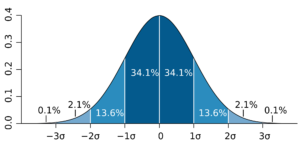 Performing a PM Optimization is not always as simple as it sounds. Often a Maintenance Planner will assemble a team of technicians to ask what is value-added and what is missing from a PM Routine. While these may be good questions to ask before diving into an analysis, or after an analysis, it does not base the answers on data. Basing the PM Routine on data, not intuition is critical to the long-term success of any organization.
Performing a PM Optimization is not always as simple as it sounds. Often a Maintenance Planner will assemble a team of technicians to ask what is value-added and what is missing from a PM Routine. While these may be good questions to ask before diving into an analysis, or after an analysis, it does not base the answers on data. Basing the PM Routine on data, not intuition is critical to the long-term success of any organization.
To perform a PM Optimization, there are three main types of analysis to focus on the effectiveness of any PM Routine. The specific analysis used will depend on how mature (or effective) the current PM Routine is, and on the specific type of failures that the PM Routine is trying to address.
Review RCM or FMEA
If the current PM routine was not developed utilizing an acceptable tool such as Reliability Centered Maintenance, Failure Mode Effect Analysis, or Maintenance Task Analysis, then this is the first step to performing a PM Optimization. By utilizing Review RCM, or an FMEA, the organization can begin to document and analyze the current failure modes experienced with a specific piece of equipment. This analysis will identify if the current tasks are effective for the type of failure (i.e. wear out or random failure).
At the completion of the Review RCM analysis, a documented equipment strategy will be available to ensure that the right maintenance is being performed for the specific type of failure mode. At this point, the organization can implement changes to their PM program and begin to experience an improvement in the effectiveness of their PM Program.
But what if the PM Routine was developed utilizing an accepted tool? Then there are two other types of analysis that should be utilized to analysis the failure data and make data-driven improvements to the PM Routine.
Weibull for Non-Repairable Components
A Weibull analysis is a common statistical analysis tool used in maintenance and reliability. The Weibull analysis is used for Non-Repairable Components, meaning that it is used for parts that are discarded after failure.
To use a Weibull analysis, begin by plotting the life data. A Beta (or slope) of the plot will provide information as to whether the failure is related to a wear-out failure mode, a premature failure mode or a random failure;
- Beta < 1 – Infant Mortality / Premature Failure
- Beta = 1 – Constant Failure Rate / Random Failure
- Beta > 1 – Wear Out / Age Related
While quite effective with non-repairable components, the Weibull analysis can only be used with a single failure mode. If multiple failure modes are included in the life data, the Beta will not be correct.
With the Beta determined, the type of maintenance being performed can be reviewed to determine if it is in line with the type of failure being observed, i.e. random, or age related. If the maintenance activity is replacing a component every 300 days and the Beta value is 1, then the right type of maintenance is not being performed and an on condition task should be established.
Lastly, the characteristic life (n) for an age-related failure will be provided as part of the Weibull analysis. This can be used to assist in determining the appropriate frequency of the maintenance activity.
Mean Cumulative Function Plot for Repairable Components
Now, if the component being maintained is a repairable component, a Weibull analysis is not the right tool to use. This is where a Mean Cumulative Function Plot comes into play. This is a plot of time in hours versus the count of failures to date.
By plotting the time in hours versus the count of failures, you can begin to see how long components are lasting. Also, you can perform an analysis on the data which will indicate the slope of the data;
- A straight line indicates that system failures are remaining constant over time
- A curve that is concave down indicates that the time between failures is increasing over time – your system reliability is improving
- A curve that is concave up indicates that the time between failures is decreasing over time – your system reliability is deteriorating
Based on this line, the type and effectiveness of the maintenance activity can be evaluated. As with the Weibull analysis, the data will allow the organization to see what failure modes are occurring when. With this information, the maintenance activity and frequency can be reviewed. A word of caution, do not take the average of the life data. Look at the plot and determine when the maintenance activity should be performed based on the probability of preventing the failure.
Next Steps in PM Optimization
Armed with this three analysis, any organization can effectively perform a PM Optimization focused on the effectiveness of the maintenance activities. However, this is only the first part of a PM Optimization process. The cost/benefit must be calculated to determine if the maintenance activity is worth doing. If it has been determined that the PM Routine is worth doing, then the PM routine needs to be analyzed to perform it in the most efficient way.
Do you have a structured approach to your PM Optimization? Do you use a rule of thumb for your reviews? What is preventing you from using data to perform your PM Optimization?
Remember, to find success; you must first solve the problem, then achieve the implementation of the solution, and finally sustain winning results.
I’m James Kovacevic
Eruditio, LLC
Where Education Meets Application
Follow @EruditioLLC
References;
[/fusion_builder_column][/fusion_builder_row][/fusion_builder_container]
